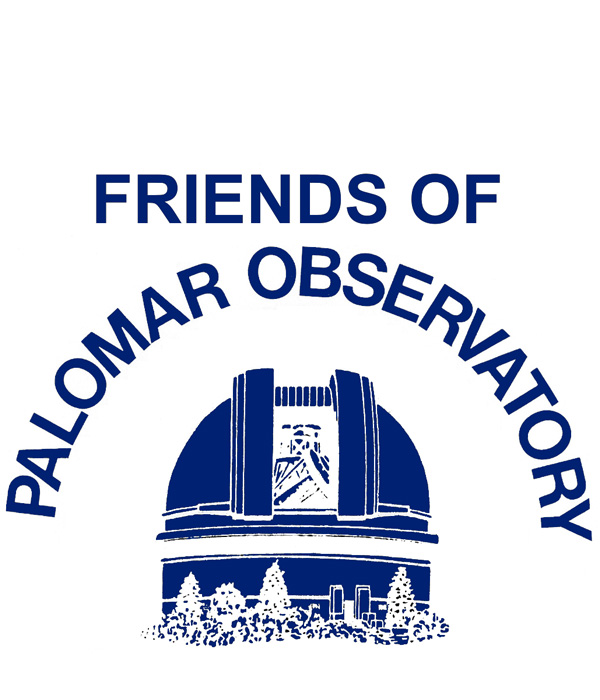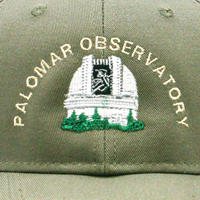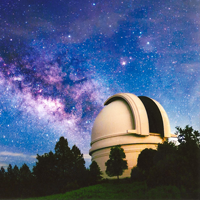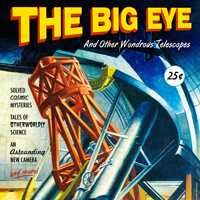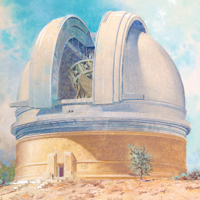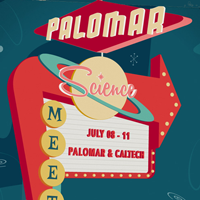Friends of Palomar Observatory Website
Upcoming Events

The Newsletter of the Friends of Palomar Observatory, Vol. 14 No. 1 – July 2019
Planetary Systems in the Making
By Annie Mejía

Eight nearby protoplanetary disks, as imaged by ALMA. All show rings and gaps that indicate the formation of planets on shorter-than-expected time scales. Click image to see all 20 observed disks. (ALMA/ESO/NAOJ/NRAO, S.Andrews et al., NRAO/AUI/NSF, S.Dagnello)
A new telescope facility called ALMA is heralding a revolution in our understanding of the star and planet formation process, a revolution that brings related science done at Palomar into clearer focus.
In December 2018, the Atacama Large Millimeter/submillimeter Array (ALMA), in conjunction with the NSF and the NRAO, released a group of stunning, high-resolution aperture-synthesis images of 20 nearby protoplanetary disks—the planet-forming gas and dust belts around young stars. One of its Large Programs, the Disk Substructures at High Angular Resolution Project (DSHARP), has conducted one of the deepest surveys ever of protoplanetary disks and given astronomers new insights into the variety of features these structures contain and the speed with which planets can form.
ALMA, a multinational facility located in Chile’s Chajnantor Plateau, observes in the microwave (0.3 to 9.6 mm) region of the electromagnetic spectrum by combining the signals from each of its 66 antennas. This astronomical interferometer has much higher sensitivity and resolution than earlier submillimeter telescopes (e.g., the single-dish James Clerk Maxwell Telescope in Hawaiʻi) or existing interferometers (e.g., the former Combined Array for Research in Millimeter-wave Astronomy in California or the Plateau de Bure Interferometer in France).
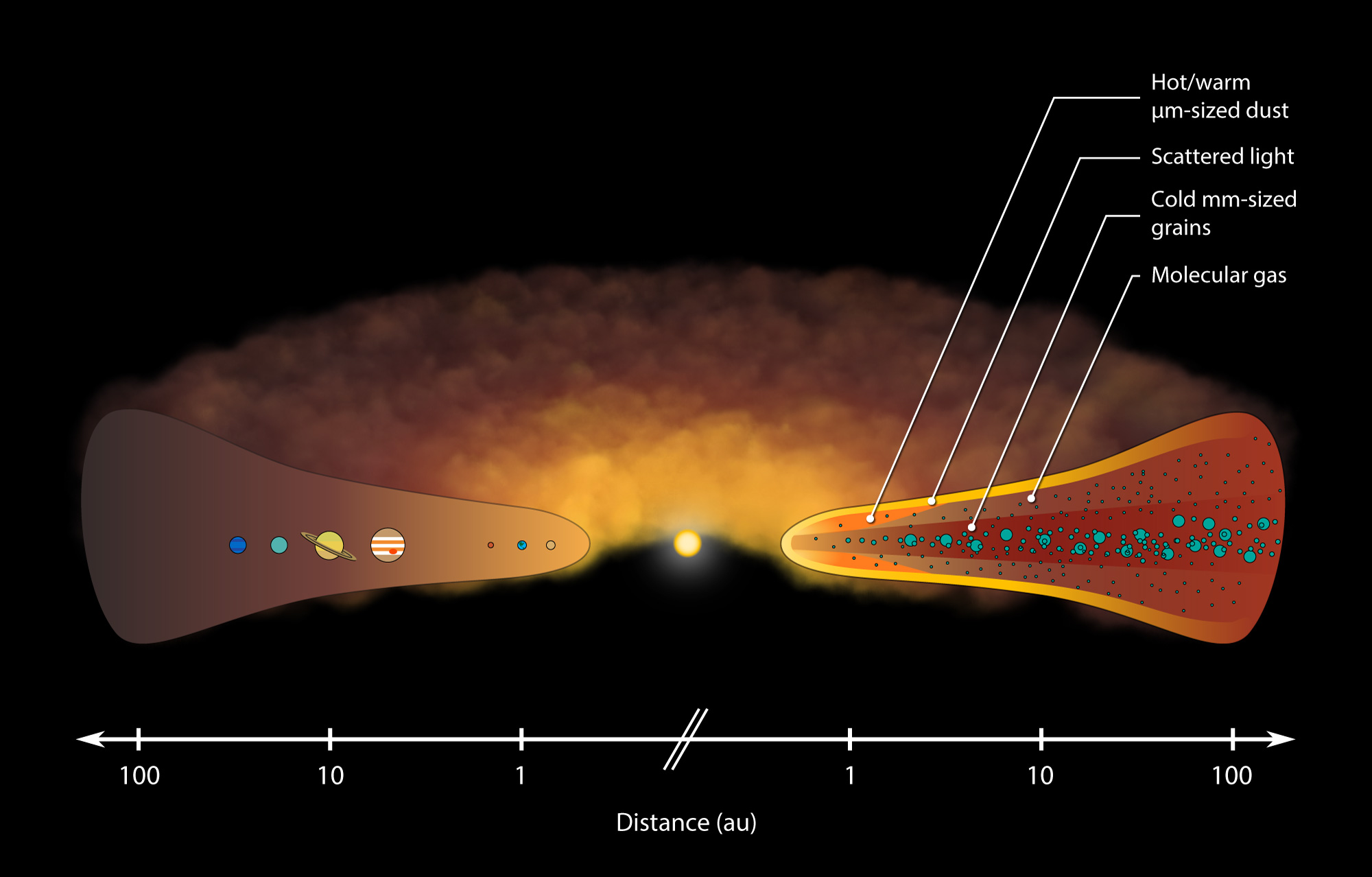
Illustration of a typical protoplanetary disk structure. The star (not to scale) is at the center and distance from it is given in logarithmic scale—highly exaggerating the space near the star. The position of the Solar System planets is indicated for scale comparison. The ALMA microwave interferometer is sensitive to the glow emitted by mm-sized grains near the disk midplane. (Based on Testi et al. 2014)

A HST view of a small portion of the Orion Nebula reveals five young stars. Four of the stars are surrounded by protoplanetary disks, or "proplyds," that might evolve onto planetary systems. The proplyds which are closest to the hottest stars of the parent star cluster are seen as bright objects, while the object farthest from the hottest stars is seen as a dark object. (C.R.O'Dell/Rice University, NASA)
The idea that planets form from rotating clouds of gas and dust around young stars can be traced back to the 18th century when scholars Immanuel Kant and Pierre-Simon Laplace independently proposed the nebular hypothesis. Originally applied to the Solar System, the nebular process of planetary system formation is now thought to be at work throughout the Universe. According to it, stars form in massive and dense clouds of molecular hydrogen. As the gas gravitationally collapses to form stars, it also coalesces into rotating circumstellar disks that eventually give rise to planetary systems. Thus planet formation is thought to be a natural byproduct of star formation. A Sun-like star takes approximately 1 million years to emerge from its embryonic envelope, with the protoplanetary disk evolving into a planetary system over the next 10–100 million years. The chemical and physical processes by which planets grow within these diffuse disks, however, are complex and not well understood. It is particularly challenging to understand the earliest stages of planet formation, when cosmic dust grains (at a microscopic scale) within a disk collide and stick to grow (relatively rapidly) into asteroid-sized planetesimals.
The ALMA images reveal that all disks in the DSHARP sample contain rings, spirals and asymmetric features that indicate concentrations of mm-sized grains. These features are located over a wide range of distances from the central star and exhibit diverse widths and intensity contrasts. Concentric bright rings separated by dark gaps are by far the most common substructures. These concentrations of solids (relative to gas) are consistent with theoretical predictions for grain trapping that could trigger rapid planetesimal formation.
Direct observation of protoplanetary disks became possible only in the 1980s with the rise of infrared and millimeter astronomy—circumstellar gas and dust ‘glow’ at these longer wavelengths. But the first widely popularized image of protoplanetary disks was produced in 1994 by the Hubble Space Telescope when WFPC2 imaged the proplyds in the Orion Nebula. Seen as analogs to the young Solar System, ALMA’s study of these protoplanetary disks is revolutionizing our understanding of the star/planet formation process, and putting us a giant step closer to understanding our home and connection to the universe. Its DSHARP disk observations and results, along with the many related studies that they build upon, mark the start of a new era in planet formation research.
From the Director’s Office: New Palomar Instrument Sees First Light!
By Andy Boden
Gentle Readers,
I am very excited to tell you about a new instrument coming to Palomar and the P200/Hale Telescope: PARVI—PAlomar Radial Velocity Instrument. Before I get too wound-up about PARVI technical details I’ll simply hit the high points: exoplanet detection radial velocity spectrograph, near-infrared operation, aimed at general exoplanet reconnaissance and TESS target followup, first light 14 June 2019.
With that terse, buzzword-friendly description out of the way I am about to seriously get my geek on talking about PARVI, so don’t say I didn’t warn you…
PARVI is an exciting new capability for Palomar/P200, developed by a collaboration between Jet Propulsion Laboratory (JPL), American Museum of Natural History (AMNH), and Caltech scientists and engineers. It has the promise of making “radial velocity” (motion along the line of sight to a star) measurements of stars at exquisite levels of precision—better than 1 meter/second (a brisk walking speed, commonly abbreviated m/s) for bright stars (more about what this means below). PARVI recently passed a major technical hurdle by having successful first-light observations Friday 14 June 2019. PARVI’s first-light milestone is a particularly significant accomplishment given that PARVI is a novel instrument in several different ways.
The physical signal PARVI hopes to measure is the gravitational reflex motion (or “wobble”) induced by planetary companions to other stars (a description of exoplanet detection techniques in general and the radial velocity method in particular may be found here).
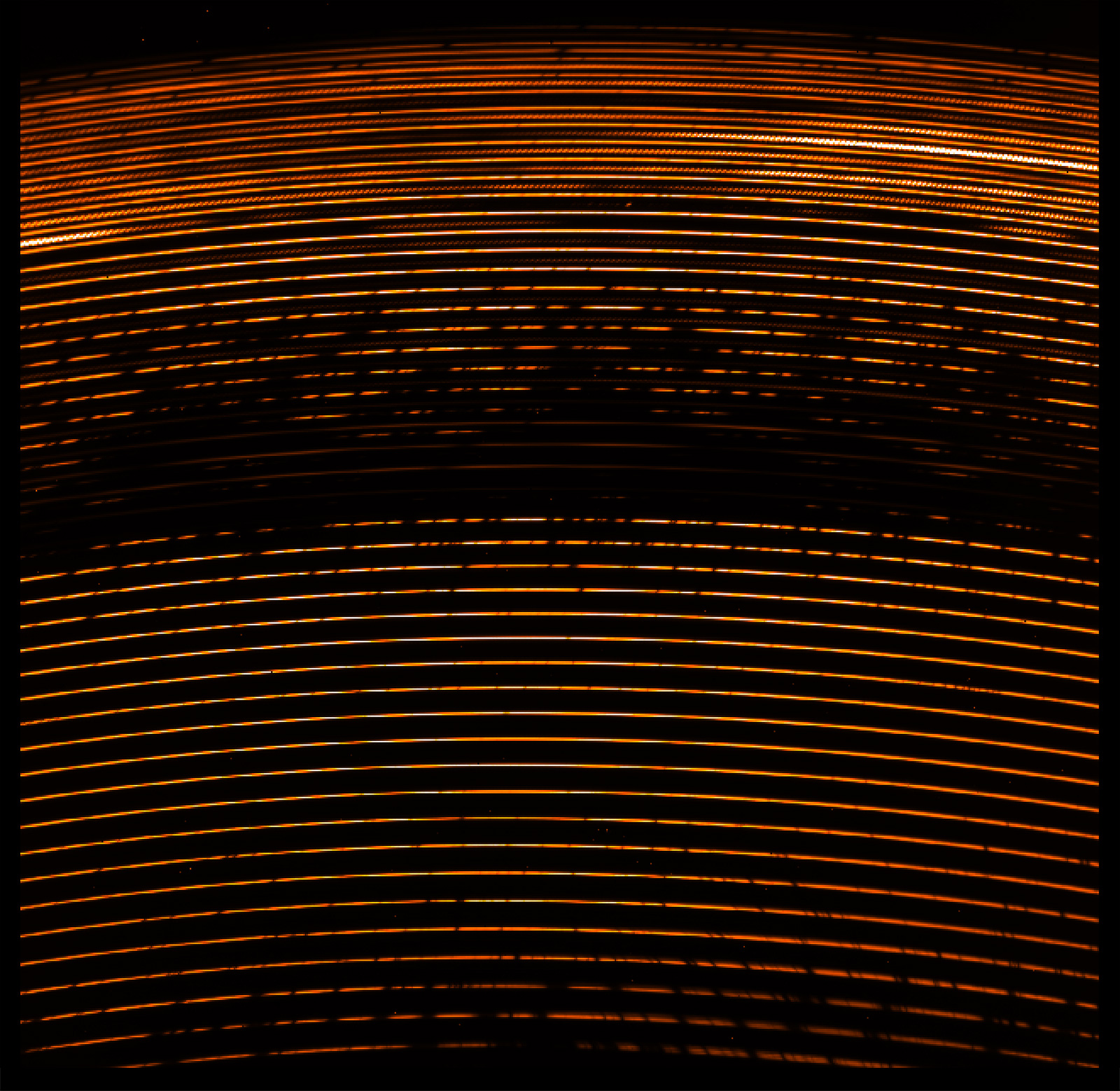
PARVI “first-light” spectrum of the bright star Arcturus from 14 June 2019. The PARVI spectral format is typical of echelle spectrometers, with wavelength dispersion along the image horizontal axis, and multiple spectrum orders (the curved semi-horizontal lines) separated (or “cross-dispersed”) along the image vertical axis. (The PARVI Development Team)
Astronomers have been detecting and studying planets around stars other than our Sun (so-called “exoplanets”) with the radial velocity detection method for roughly the last 25 years. Large exoplanets (e.g. Jupiter-mass) typically induce reflex motions on the order of 10s to 100s of m/s, but a planet like Earth around a sun-like star would induce smaller motions—maybe only 10s of cm/s. It is these smaller planets, particularly around nearby lower mass stars, that animates the PARVI instrument and makes it an excellent facility for followup study of planet detections from NASA’s recently-launched TESS mission.
There are several novel aspects to the PARVI design that makes it timely and suited to study nearby, low-mass stars. PARVI’s first novelty is it is physically separated from the Hale Telescope (even in a different floor of the dome!), with light conveyed from the telescope to the instrument by an optical fiber. This separation allows PARVI to operate in a carefully-controlled and stable physical and thermal environment—important for making precise measurements over an extended period of time. Further, the optical fiber used to transport the starlight is a “single-mode” fiber, which effectively means that the fiber preferentially delivers only a very stable and unaberated optical wavefront to the instrument. To make fiber injection practical, PARVI uses the Hale Telescope’s PALM-3000 adaptive optics system to mitigate the atmospheric distortion (or if you prefer, “twinkle”) of the incoming starlight.
PARVI’s second novelty is that it makes its measurement in the near-infrared (near-IR) rather than the optical, at a wavelength near 1.6 μm. This wavelength is outside the range our eyes can see, in a region of the electromagnetic spectrum preferred by stars that are lower in mass than the Sun. This is particularly important because such low-mass stars dominate stellar demographics, and the near-IR operating wavelength gives PARVI the best sensitivity to planets around these prevalent stars. Further, in addition to the input star’s spectrum, PARVI injects a parallel “laser-comb” wavelength reference, which helps mitigate measurement errors due to time-varying instrument misalignments and drifts resulting from vibrations and temperature changes.
The last PARVI novelty I will mention here is the fact that the instrument itself is a creative and efficient bit of recycling: the PARVI camera and detector is repurposed from the earlier Palomar Project 1640 exoplanet imaging search. This component reuse significantly reduced the PARVI development cost and schedule compared to starting from scratch, effectively leveraging the P1640 investment to enable a new Palomar science capability.
Among the most important things astronomers have learned in the past 20 years is the prevalence of planets around other stars, and Palomar/P200 has been making significant contributions to that understanding. With PARVI, Palomar is positioning itself to continue making important, relevant contributions to our study and understanding of exoplanets around nearby stars.
Upcoming Events

Embedded in a star forming region in the constellation Taurus, HL Tau is 456 lightyears from Earth and, given its luminosity and temperature, is estimated to be 100,000 years old. The entire disk is 235 astronomical units across and the inner most ring is about the same distance from the proto-star at the center as Neptune is from the Sun. (ALMA/ESO/NAOJ/NRAO, C.Brogan, B.Saxton)
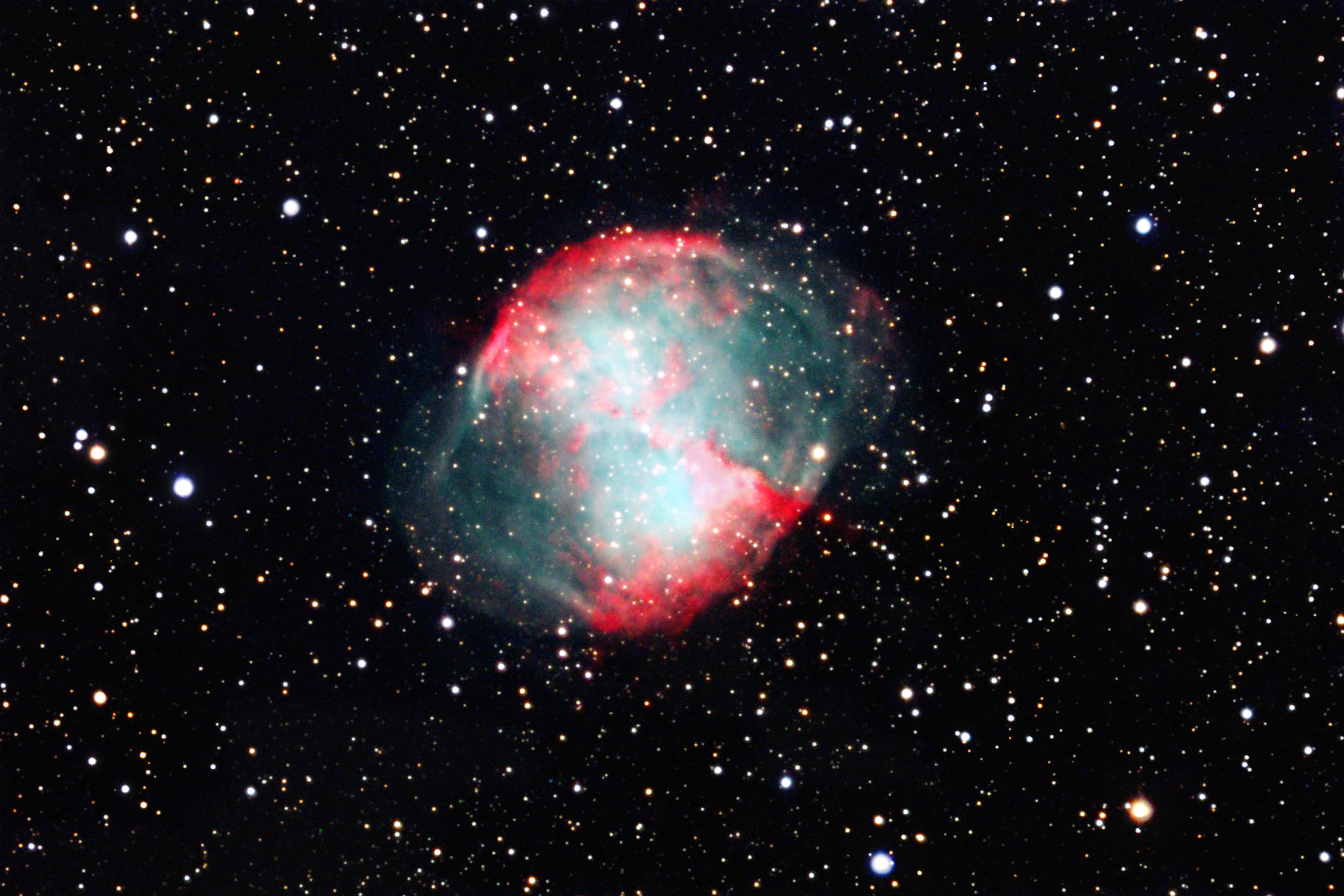
Palomar Observatory Docent Sam Pitts obtained this image of the Dumbbell Nebula (M27, NGC 6853) on June 1, 2007 at Eagles Rest in Dexter, Oregon. He used a Celestron C11 telescope with a ST8XME LRGB camera. The total exposure time was 115 minutes in a series of stacked 5 minute sub-frames. The image was processed using CCDSoft, CCDStack and Photoshop. (S.Pitts)
First, on Saturday, July 27, Dr. Rachel Akeson, senior research scientist and acting manager of the NASA Exoplanet Science Institute, will give a presentation titled “The ALMA Revolution.” Dr. Akeson studies the formation of stars and planets using, among other techniques, the high angular resolution that can be obtained with interferometers at infrared to millimeter wavelengths. She is concerned with the structure and evolution of the gas disks found around many young stars which serve as reservoirs of material for the formation of planetary systems.
Located at 16,400 feet in the Chilean Andes, the Atacama Large Millimeter/submillimeter Array (ALMA) is a radio telescope that is used to study the coldest objects in the Universe. ALMA is comprised of 66 high-precision antennae having a maximum baseline of 10 miles. As described by Annie in her ALMA article, this instrument has obtained many images of young stars with proto-planetary disks. Among these, the image of a pre-main sequence star designated HL Tau is especially noteworthy. As seen here, ALMA was able to resolve the gas disk that had formed during the gravitational collapse of the original nebula. Strikingly, the dark rings seen within the disk are voids being cleared by orbiting protoplanets.
The program will begin at the Outreach Center:
| Sat July 27 2019 | |
|---|---|
| 6:00 – 6:30 pm | Reception with light refreshments |
| 6:30 – 7:30 pm | Dr. Akeson’s presentation |
| 7:30 – 8:30 pm | Tour of the Hale Telescope |
| 8:30 – 10:30 pm | Star Party |
We hope to be on the observing floor to see the dome open. For the star party, sunset is at 7:58 PM and the Moon is not present during the evening hours. Anyone who would like to help is welcome to bring a telescope to the star party.
If you would like to attend this event, it is very important that you send an RSVP to me at flanders [at] caltech.edu.
Second, we are planning a special interest event at the Outreach Center on the evening of Saturday, September 28. We will be holding an astro-imaging seminar. If you are interested in obtaining high quality images of the night sky, we will have a number of experts present to discuss and demonstrate the techniques and equipment needed to produce the type of outstanding results that are shown in this example.
However, we have not yet finalized the planning for this event so I will send you more information within the next few weeks.
- Steve Flanders
Questions? We've answered many common visiting, media, and academic questions in our public FAQ page.
Please share your feedback on this page at the
COO Feedback portal.
Big Eye 14-1
Last updated: 24 June 2019 AFB/SBF/ACM
